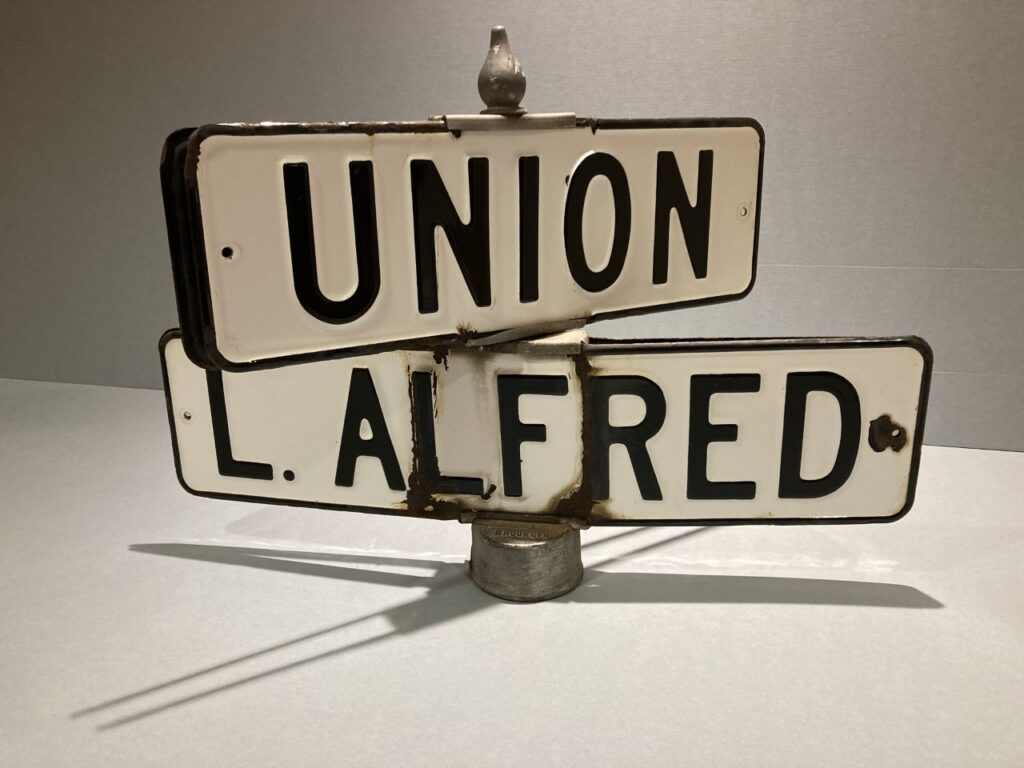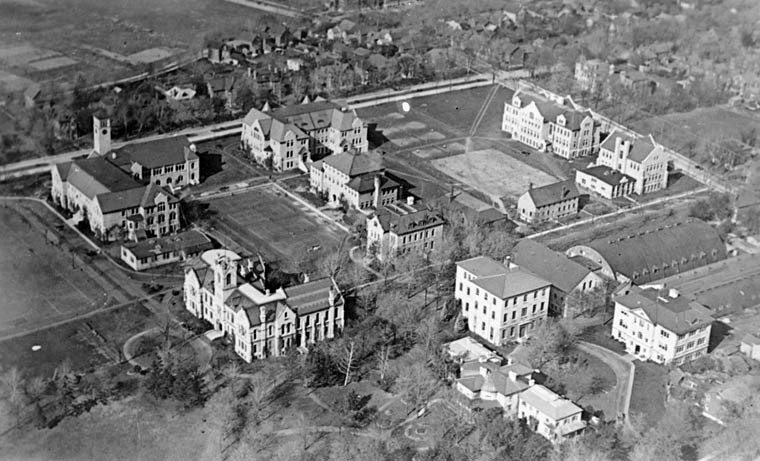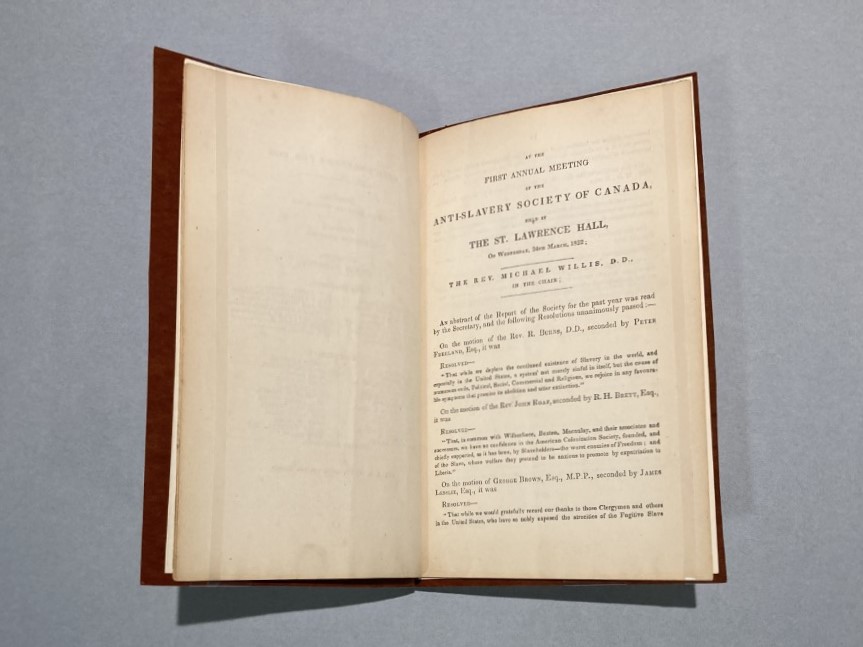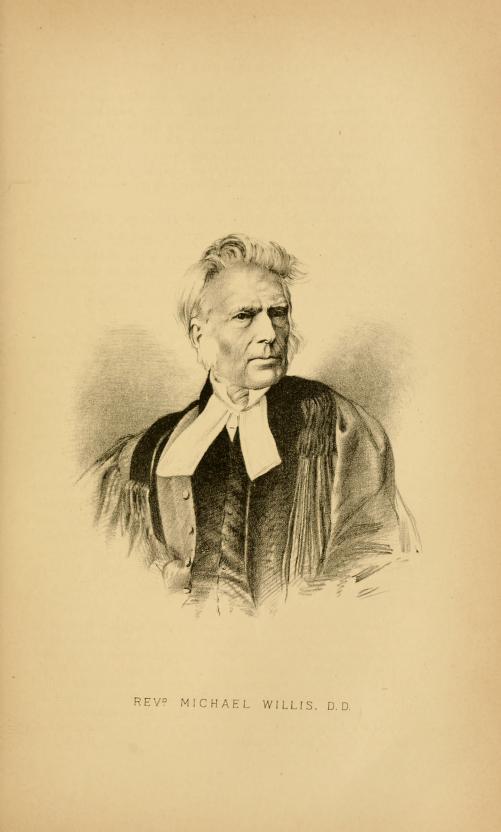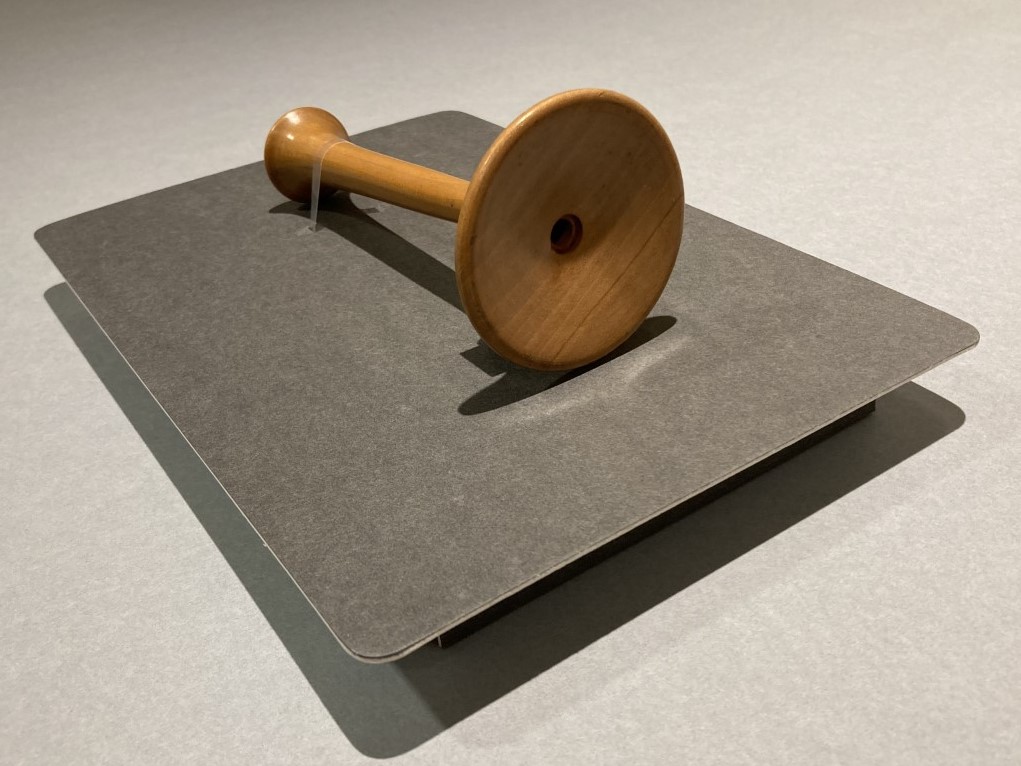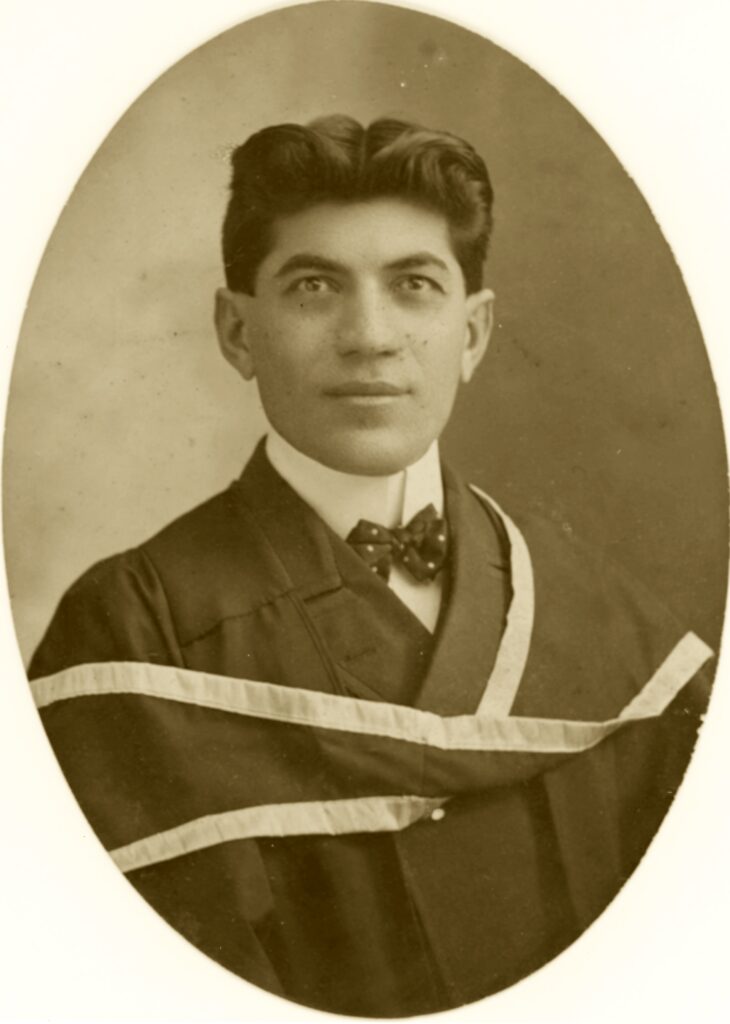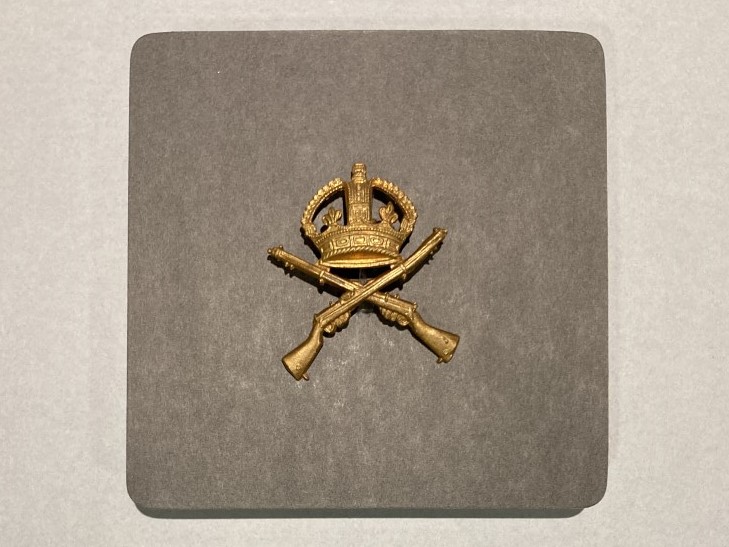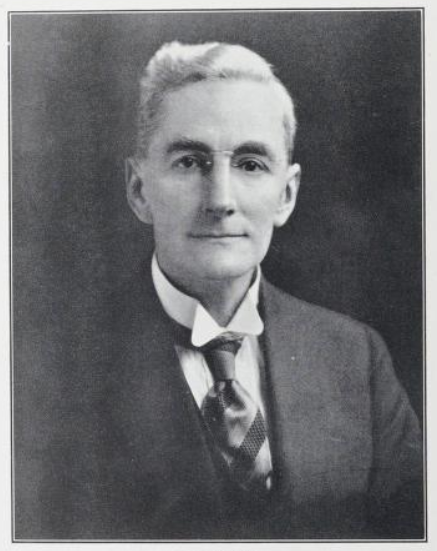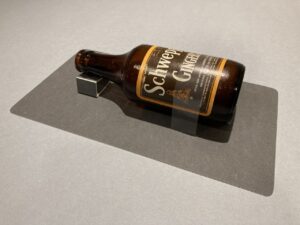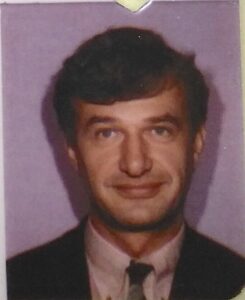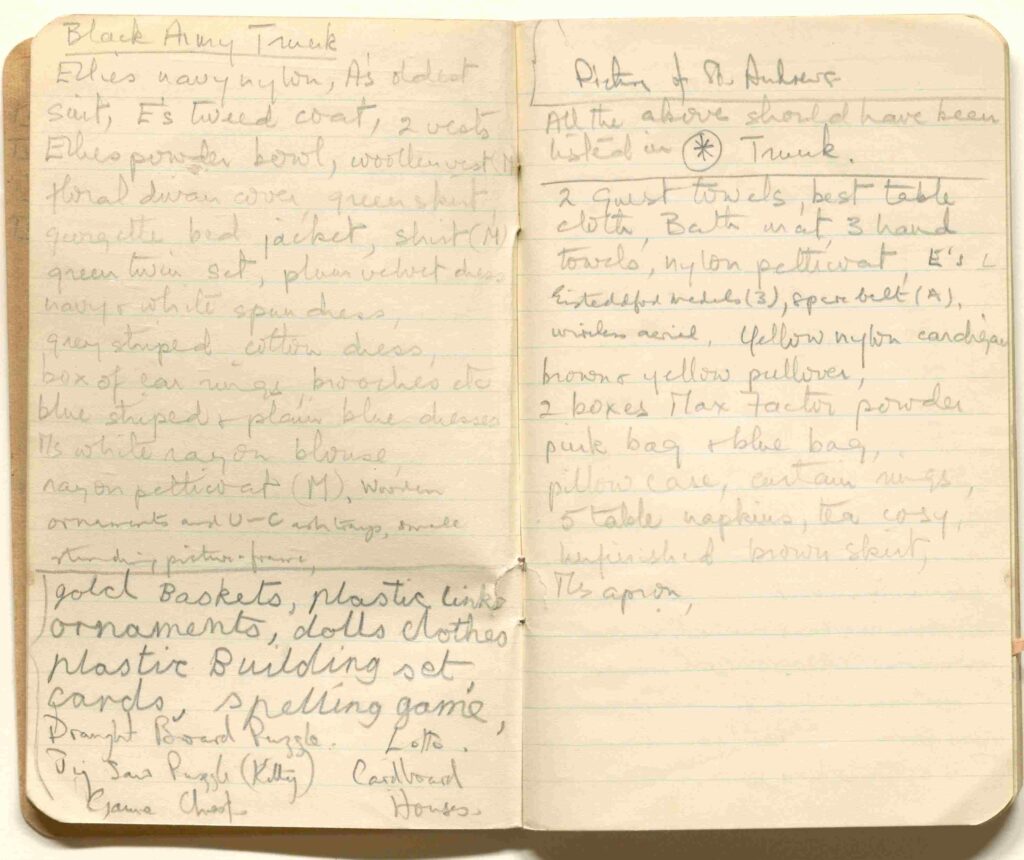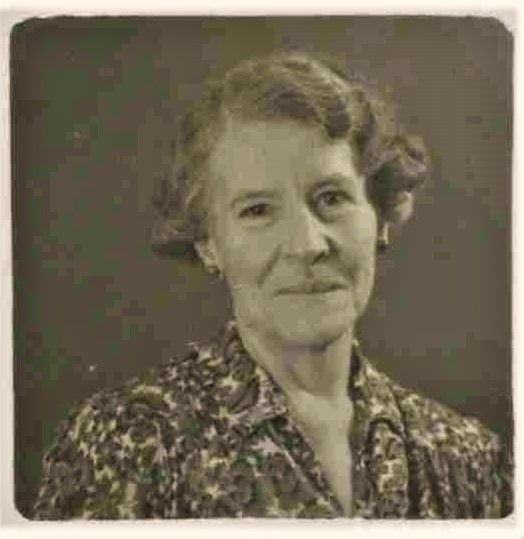Terms like departure or destination reduce complexity, especially for refugees – orientation and reorientation were more common, even for those helping refugees and organizing relief.
(6) Geographies
Picture: Queen’s University from the air, 1919, Library and Archives Canada, Wiki Commons public domain
Union Street, one of the main streets on campus outside the Douglas Library was presumably named in commemoration of the Union Act of 1840 that united Lower and Upper Canada into one Province of Canada after rebellions for democratic reform in the late 1830s. Shortly after, in 1841, Queen’s University was founded. This is where our story starts: with the artificial settler-colonial geographies which our campus represents in the present day, and with the forced migration of Indigenous peoples who lived in these territories long before settlers, Loyalists, and other newcomers arrived.
Therefore, the aerial photograph from 1919 is misleading: you can see Union Street and an empty space where Douglas Library and the Queen’s Refuge exhibition is located now. But this place was not ‘terra nullius’. Our exhibition is located on the traditional and of the Haudenosaunee and Anishinaabek peoples, and we are grateful to be guests on these lands with a long history – a history that is directly linked to refugees and forced migration in very different contexts.
(7) Michael Willis (1798-1879)
Picture: Michael Willis, in: David Scott, Annals and Statistics of the Original Secession Church: Till its Disruption and Union with the Free church of Scotland in 1852 (Edinburgh: Andrew Elliot, 1886), p. 72-73
Michael Willis was born in Greenock, Scotland and studied at the University of Glasgow where he also received his ordination in 1821. Later, Willis became a representative of the Free Church of Scotland and was sent to Canada in 1845, he taught at Knox College in Toronto until his retirement in 1870. Willis became the first President of the Anti-Slavery Society of Canada in 1851, after publishing against slavery while in Scotland. He was especially interested in the work of the Elgin Settlement (Buxton, Ontario) as part of the Underground Railroad, aiding people of colour who had escaped slavery. 1863, Willis received one of the first honorary doctorates of law granted by Queen’s University.
In this Report on the first annual meeting of the society, chaired by Michael Willis in March 1852, opened with an unanimously passed motion that characterized slavery as the cause “of numerous evils, Political, Social, Commercial and Religious, we rejoice in any favorable symptoms that promise its abolition and utter extinction.” Cooperation with the “Ladies’ Association for the Relief of Destitute Colored Fugitives” was also mentioned, pointing to the variety of peoples and the nature of relief referred to within this publication: the report did not recommend the migration “of free persons of color” from Canada to Trinidad, for example, because of the ongoing “modified system of Slavery” there. The report described the situation in communities like the Elgin Settlement and Queen’s Bush in Ontario. The entire group of formerly enslaved Black refugees at the time in Canada West was estimated at 30,000, most of them from the U.S.
While the work of the Anti-Slavery Society of Canada provided relief, accommodation, and education for refugees, it remained a settler-colonial project on Indigenous lands. This Report also pointed to the “importance” of “healthful exercise in the different settlements–a moral and religious element to elevate, to restrain and to Christianize.” Such ambivalence is also evident in the honorary degree Willis received from Queen’s in 1863 – the second recipient that same year was John A. Macdonald.
(8) Samuel O. Eshoo (died 1956)
Picture: Samuel O. Eshoo pictured in his 1902 graduating class composite, folder V28 Cl-Med-1902-1, no. 32, Faculty of Medicine, Queen’s University Archives
Dr. Samuel O. Eshoo was born in Persia to Christian Persians of the Assyrian race, his father was a Presbyterian Minister. As Imperial Germany’s actions began affecting his community, Eshoo fled to Canada, more specifically, fleeing to Queen’s University. Growing up, Eshoo dreamt of becoming a medical missionary, and in coming to Queen’s, he hoped to be able to do that for his own country.
Eshoo graduated from Queen’s in 1902 with an MD and CM, as well as the Principal’s Award bestowed by votes of the graduating class. The Queen’s Journal notes that this was an obscure moment, as “rare indeed is it for a foreigner, especially when he belongs to a nation so alien, at least to Canadians, as is Persia, to win the esteem and good-will of his associated to such a marked degree that they award him a prize in preference to men of their own race.” Eshoo demonstrated an immense passion and drive to help others.
Upon graduation, Eshoo returned to Persia, becoming a transient of information between refugees in Persia and Queen’s University. In 1904, the Queen’s Journal published an article entitled “Famine Threatened Queen’s Missionary,” reciting Eshoo’s summary of the refugee situation in Persia, as well as creating a system for the Queen’s community to donate to refugees in Persia.
While working as a missionary, all British subjects were instructed to leave, but Eshoo noted that “it seemed as risky to attempt the escape as to remain.” In attempting to flee to Canada, Eshoo became acquainted with a Persian Prince, who disguised Eshoo and his children and hid them for six months, asking only that Eshoo be their family’s physician in return. Eshoo eventually made it to Tabriz, but as Bolshevik uprisings instigated, Eshoo was aided again by the Prince in fleeing back to Canada.
Eshoo returned to Canada in 1920 and started a career with the Women’s Missionary Society of the United Church as a physician, where he worked until his retirement in 1942. Passing away in 1956, Eshoo’s passion for helping others combined with his medical degree from Queen’s guided him in a multitude of directions throughout his life.
(9) Ernest Cockburn Kyte (1876-1971)
Picture: Ernest Cockburn Kyte as librarian in the Tricolor Yearbook 1929 (Kingston, 1929), p. 10, Queen’s University Archives
Born in Cardiff, Wales, Ernest Cockburn Kyte began working as a librarian at 18. Upon moving to Canada in 1927 he held the position of Chief Librarian of Queen’s University for 20 years; he was also a co-founder of the Bibliographical Society of Canada. In the First World War and from 1914 to 1919, Kyte served in the British Army as a musketry officer in a divisional wing battalion of the infantry in France.
His papers at the Queen’s University Archives contain numerous short stories, including the unpublished manuscript, “No Refuge For Refugees”. He wrote this short story after the outbreak of the Second World War and depicted refugees in France fleeing the German attack in 1940. While this story was fictional, Kyte was confronted with such refugee groups when he was a soldier in France: about 8% of the Belgian population fled their country after the German attack and until November 1918, some 320,000 of them relocated to France. Kyte remembered them in the new situation of another war and another people in need. The “No Refuge For Refugees” short story mirrors his geographical and experiential knowledge from World War I, also his sensibility for the humane perspective of refugees as individuals.
The refugees during the First World War refer to Kyte’s later domain and to Queen’s University where relief efforts for Belgian refugees had been organized in the Fall of 1914 by the Belgian Relief Committee and other groups.In November 1915, for example, the Theological Alumni Association organized a concert with Belgian artists at Grant Hall for “Belgian sufferers.” Later in the war, money was collected by the Queen’s War Relief Fund and distributed to relief organizations supporting refugees from the Armenian genocide or Serbia, and also to people from Belgium.
(10) Artur Zylinski Arthur (1927-1990)
Picture: Queen’s ID of Artur Zylinski Arthur, 1970, Artur Zylinsky Papers, box 1, folder 27, Queen’s University Archives
Artur Zylinski Arthur was born in Lithuania, a country occupied by the Soviet Union in June 1940 when he was 13 years old. He was imprisoned after the German occupation in Summer 1941 and brought to France as a forced labourer. Assisted by the French Resistance, he escaped to Britain and joined the Polish Armed Forces in the West. In 2020, his daughter-in-law published the novel, Against My Will: Lithuania to Freedom, telling the story of an odyssey through Europe and beyond.
After the war, Arthur studied commerce, economics, and business administration in Scotland, earning a BSc in 1950. Until 1957, he worked as an accountant for the soda company Schweppes – before starting a very successful university career in psychology. After further studies he earned his PhD at the Institute of Psychiatry of the University of London in 1963. Until 1965, he worked at the University of Canterbury in Christchurch, New Zealand, where he introduced a training program in clinical psychology. In the same year, he became director of the graduate program in clinical psychology at Queen’s University and professor of psychology in January 1966. He died in May 1990, shortly after his retirement.
Arthurs’ biography reminds us in particular that the connection between forced migration and the University does not lead to a straight and foreseeable path or direction. His research was dedicated to psychological techniques of decision-making and the impact of stress. In October 1989, a few months before his death, he was quoted in the Queen’s Journal about student stress. To a certain extent, one of his answers also referred to the relationship between his own experiences as a refugee and his research, stating that in “the past relationships and survival were more important. But since World War II, people have the opportunity to succeed and it makes them work harder. Today’s lifestyle is much more stressful.”
(11) Eileen Keppel-Jones (1910-1981)
Picture: Eileen Keppel-Jones, c. 1970, Keppel-Jones papers, box 35, folder 10, Queen’s University Archives
Eileen Bate was born in East London, South Africa, as a British citizen and married to the historian Arthur Keppel-Jones, they had twins and a daughter. The family lived in Johannesburg, South Africa, where Eileen worked as a music teacher and wrote music.
When the political situation changed, the couple decided to leave. While not entirely free in this decision, both were in a privileged situation with specific directions: In April 1953, Arthur reached out to four Canadian professors that he knew, and later received an appointment letter from Queen’s in July. In the meantime the family prepared their departure. This notebook with packing lists represents the opportunity of preparation; the Keppel-Jones were able to bring several trunks and other luggage. Partially, not only the parents filled these lists but also the kids.
By the end of July, the family sailed from Cape Town, South Africa, leaving family and friends behind. They arrived in Canada on August 15, 1953, and lived at 27 Park Street. Following their arrival, Arthur Keppel-Jones did not want “to live the life of an exile … longing only to return at the earliest possible way. … Together with Eilleen, he became a citizen very early on.” We can find this description in Arthurs’ retirement speech at Queen’s in 1982 – one year after his wife died. Her work has been remembered with four annual piano scholarships for “several piano students” in Kingston “in memory of Mrs. Keppel-Jones who inspired many young pianists.”
